After a bright and sunny start it clouded over a bit more from late morning and there was a fresh breeze at times, which meant it thankfully didn’t get too hot today, maxing out at a pleasant 21C. We spent the day down in the Brecks and Fens.
Our first stop was Weeting, before it got to hot. We walked out to West Hide, and immediately found the Stone Curlews on the cultivated strip in front of the hide. They are back on eggs now, a second brood attempt, and their first brood young have been pushed out.
One of the adults was tucked down in the grass, sitting tight on the scrape. The other Stone Curlew was initially stood up behind, but sat down before we could get the scope on it and completely disappeared! We turned our attention to the first and could see its staring yellow eye. The second Stone Curlew then stood up again and let us get a good look now. Prehistoric-looking birds! A Green Woodpecker flew in over the heath and over the trees.
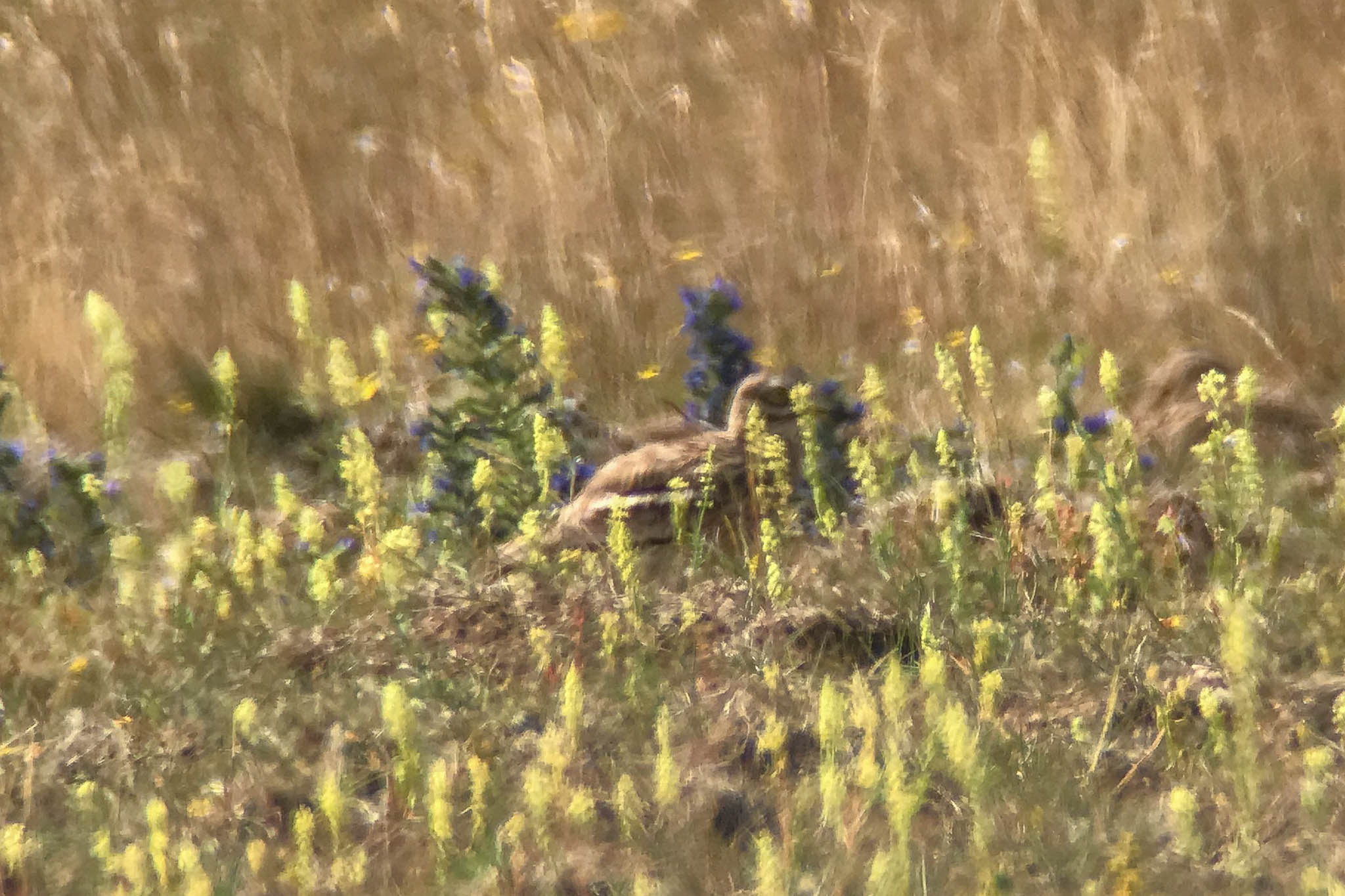
Having had a good look at the Stone Curlews, we went back outside. There was no sign of any Spotted Flycatchers by the hide – apparently their first nesting attempt has failed. We walked slowly down to the far end to see if there was anything in the trees, but it was rather quiet this morning.
We had a quick look from the hide at the end and there was lots of activity around the feeders in front – a selection of tits and finches coming in to the seed. A Marsh Tit appeared on one of the feeders briefly, and another came down to drink at the small pool in front. A smart male Yellowhammer was down in the grass below the feeders.
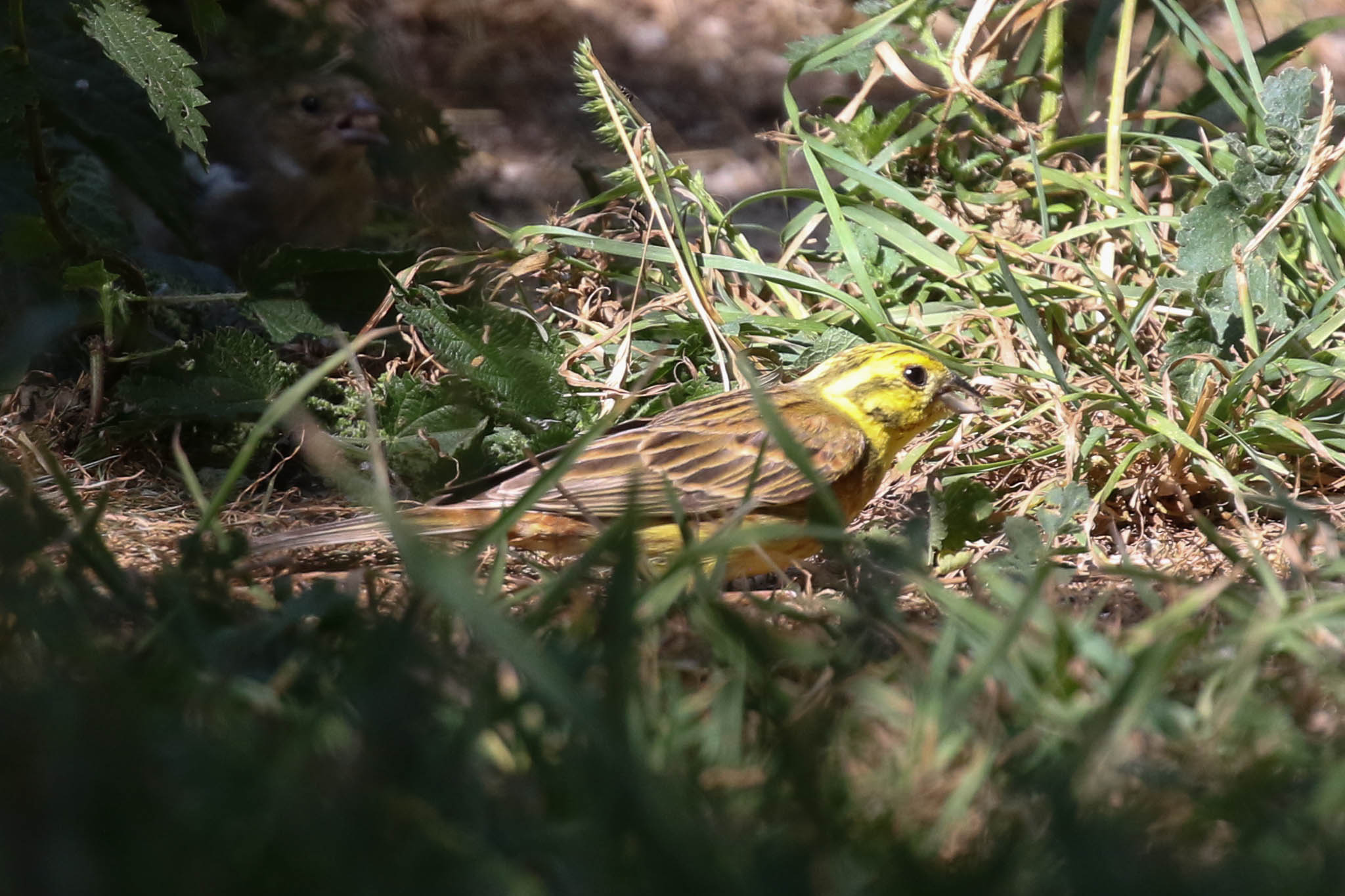
We walked back past the Visitor Centre and on to East Hide – but there was no sign of any Spotted Flycatchers down this end either, just a Jay high in the trees. There was nothing from the hide either, so we walked back. After a quick look at some of the scarcer speciality plants around the car park with the warden, James (including the rare naturalised tunic flower), we decided to move on.
Our next destination was Lakenheath Fen. As we walked out along the main track, there were still a few butterflies around the brambles – Small Tortoiseshells and a Comma. There were dragonflies too, several Ruddy Darters, Brown Hawkers, Common Blue and Azure Damselflies. A Southern Hawker was hanging on one of the poplars.
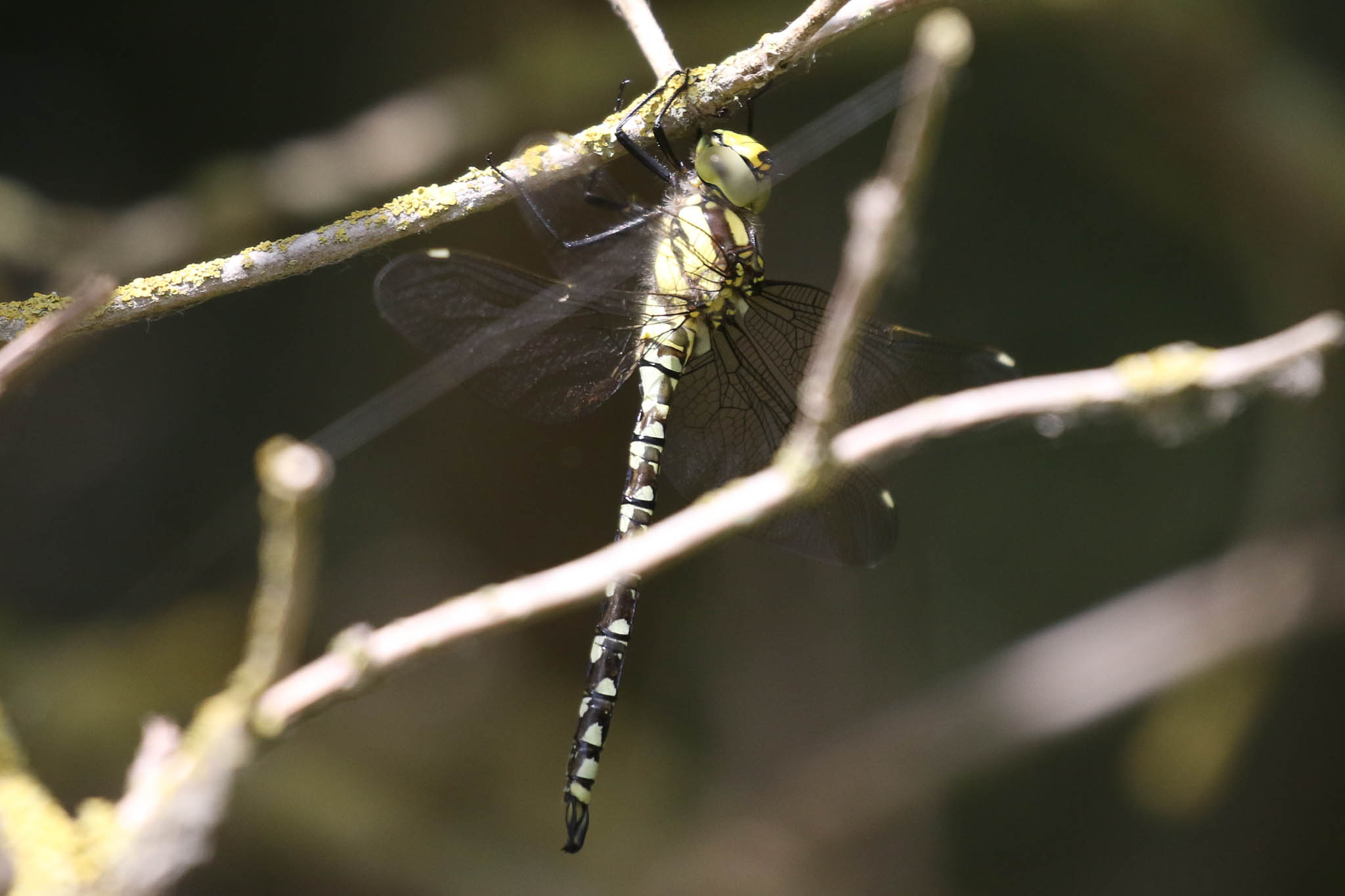
We sat for a while on the benches at New Fen Viewpoint, looking out over the reeds. A juvenile Marsh Harrier circled up in the distance, before landing in a bush in the reeds. We got it in the scope and admired its burnt orange head. A little later it took off again and drifted much closer, eventually circling over the pool right in front of us, a great view. A female Marsh Harrier was perched on a bush further back, we could see its much paler head and pale markings on its wings.
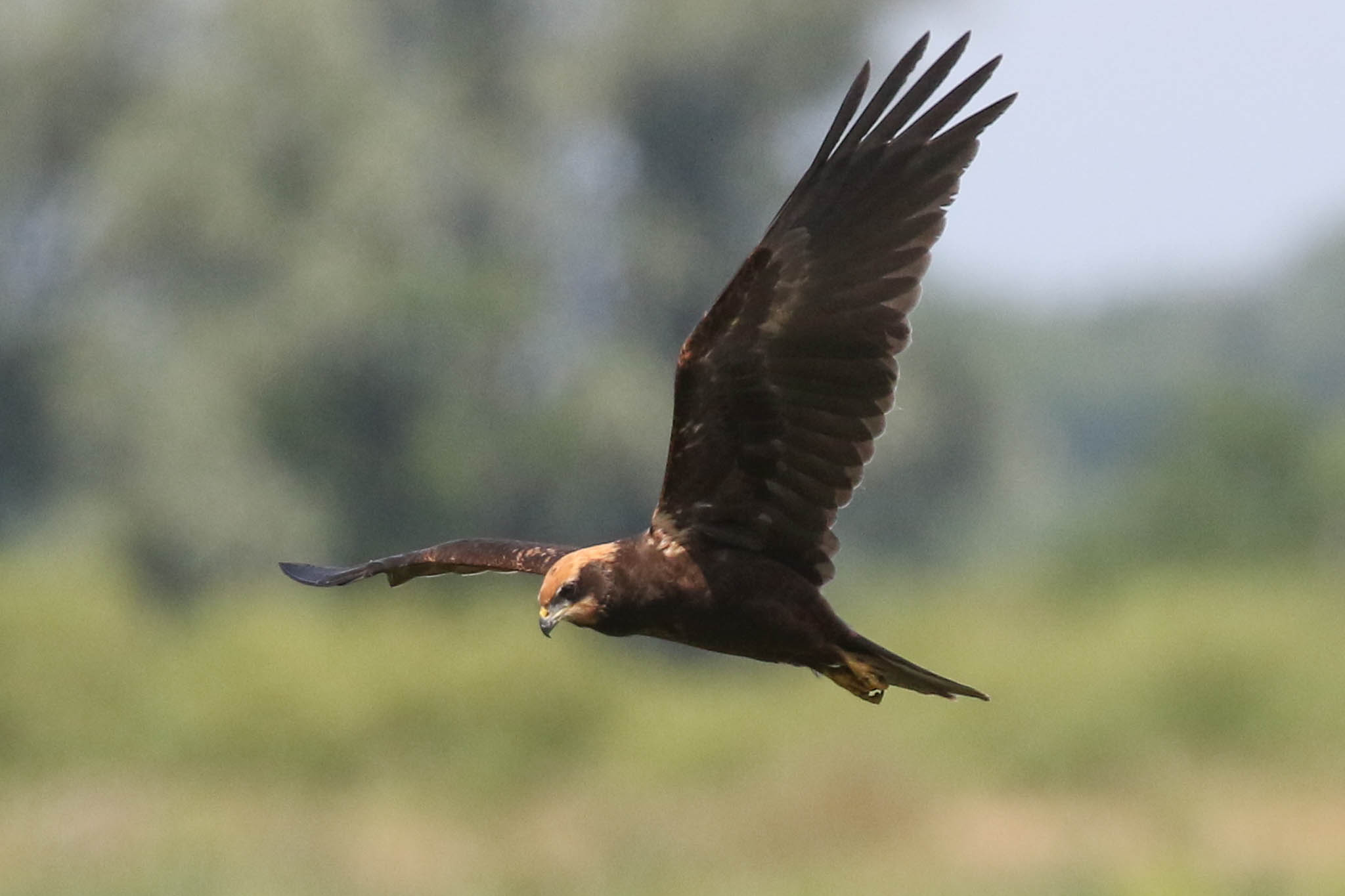
A Bittern appeared from the back of the reedbed, over in front of West Wood, and we watched it as it flew across towards the river. It passed right in front of a second Bittern going the other way! The first flew over the riverbank and disappeared, so we turned our attentions to the second and watched it fly out over the reeds and drop down at the back. A short while later, it flew up again – it turned and looked for a second like it might fly towards us but then dropped down again.
We heard a Kingfisher call but it didn’t appear. There were several Four-spotted Chasers and an Emperor Dragonfly hawking low over the water. There was no more sign of the Bitterns, so we decided to move on.
We walked down the path on the bank beside the reedbed. A family of Common Whitethroats was feeding in the hemlock, and flicked off ahead of us before flying across the path. We heard a Bearded Tit call and had a brief view as it skimmed over the top of the reeds. There were more dragonflies and butterflies along here, and we stopped to admire a mating pair of Ruddy Darters.
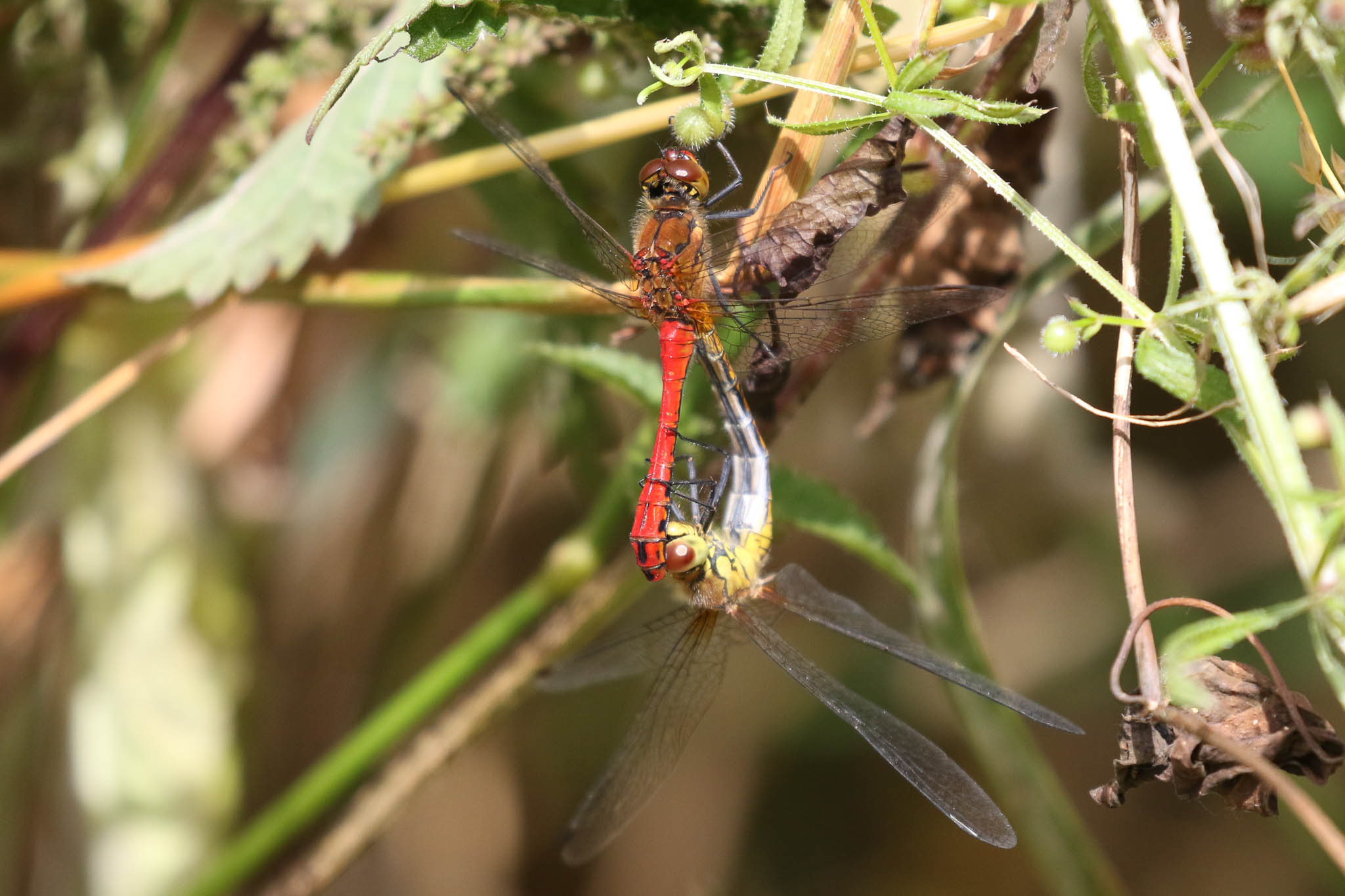
We had just got in to Mere Hide when we heard a Kingfisher call and looked out through the window at the far end to see two flying across low over water. One landed briefly but out of view from where we were and unfortunately didn’t linger and flew off calling again.
There were lots of damselflies on the islands of weed out on the water in front of the hide. Looking through them, we found both (Large) Red-eyed Damselflies and a Small Red-eyed Damselfly, the first time we have seen the latter here. A nice bonus. There was not much else going on in here, and it was nearly lunch time so we decided to press on. On our way back to the main path, a Black-tailed Skimmer was basking on the gravel in front of us and a female Common Blue butterfly was nectaring on the thistles.
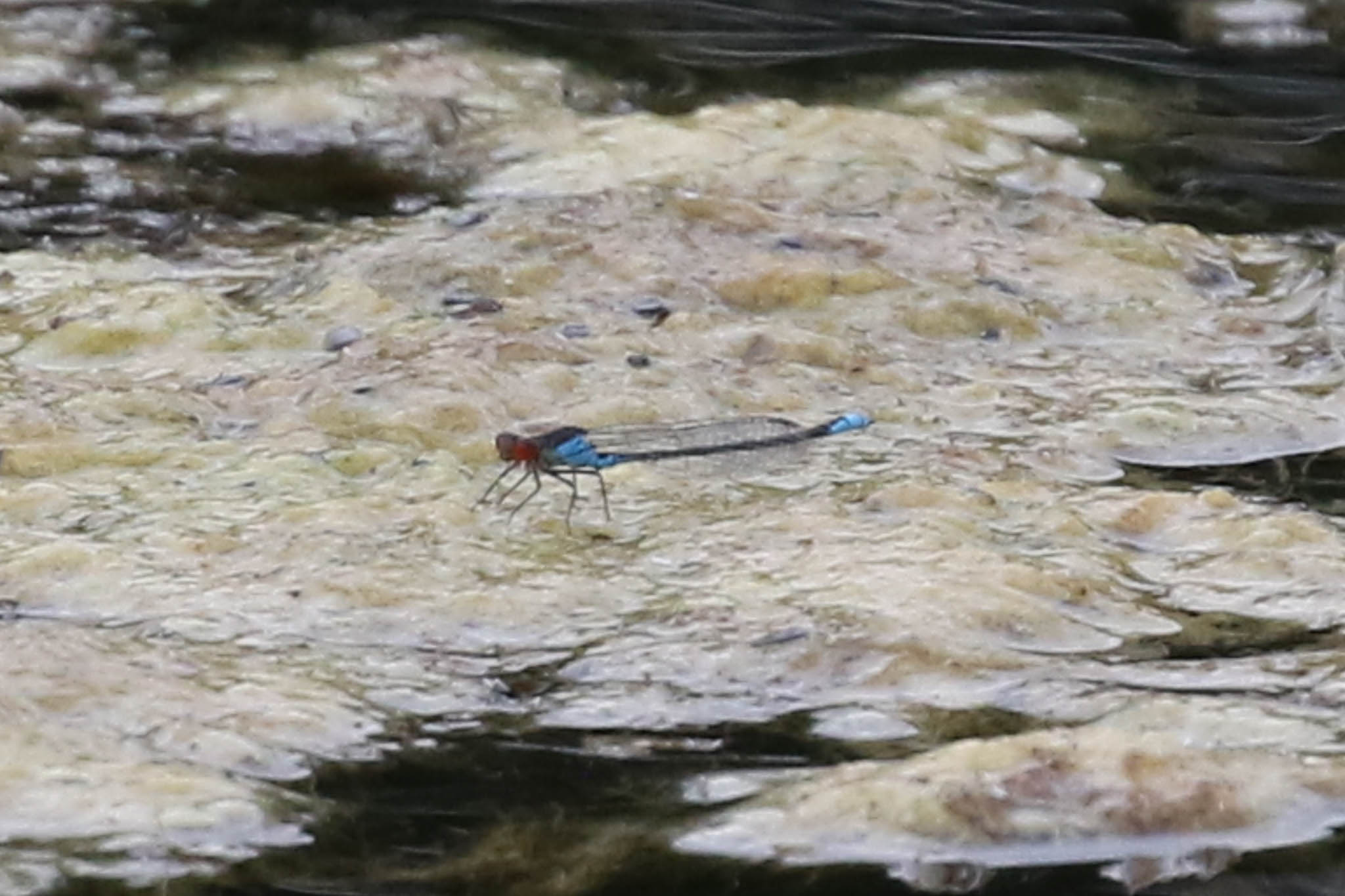
When we got to Joist Fen viewpoint, we stopped for lunch on the benches. It was rather quiet here today, the Bitterns probably having fledged already, and there was no sign of either pair of Cranes. The Cormorant was on its usual dead tree, drying its wings, and several Marsh Harriers circled over the reedbed in the distance. We did see a nice juvenile Bearded Tit feeding low down in the reeds in front of the viewpoint.
One of the wardens was cutting the grass paths with an ATV and having done the public paths drove out along the track across Joist Fen beyond the barrier. Everything flushed from the pools – and we looked over to see eight Great White Egrets in flight together, along with at least three Grey Herons and a selection of ducks. A Green Sandpiper appeared over the reeds closer to us briefly, but unfortunately dropped down again almost immediately.
After lunch, we walked back along the riverbank, and not surprisingly activity was subdued in the heat of the afternoon. A Grey Heron was standing motionless on the far bank and a few Banded Demoiselles fluttered over the river. We stopped for a quick scan of Hockwold Washes. There were lots of Lapwings, a large group of Black-tailed Godwits and two moulting male Ruff right at the back of the remaining water. Several Teal, a pair of Shoveler and a few Gadwall were swimming around in the middle.
When everything erupted from the water, we looked up to see a Peregrine flying over. It came over to our side of the river and circled slowly over towards East Wood. It looked rather tatty, a moulting young brid.
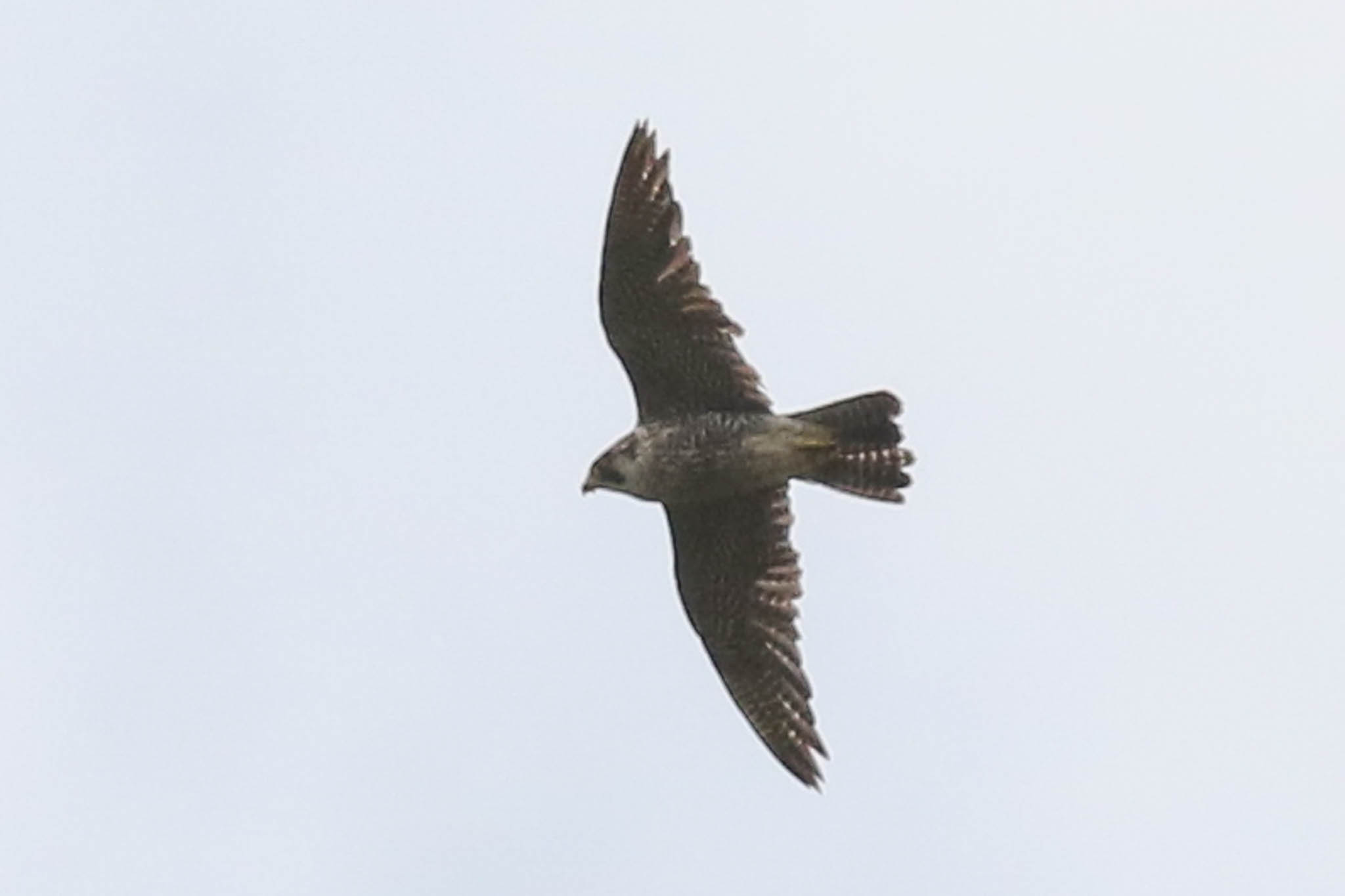
A Cetti’s Warbler shouted from the sallows as we made our way back to the Visitor Centre for a well-deserved ice cream and/or cold drink. The warden kindly showed us some nice trail cam video of one of the pairs of Cranes with their two young, from a couple of weeks ago, just before they fledged.
We hadn’t seen any Cranes ourselves so we decided to have a drive deeper into the Fens to see if we could find any. We didn’t have to go too far today. Scanning an overgrown meadow, we could see two heads sticking out of the long grass. We managed to get out and get them in the scope, a pair of Cranes.
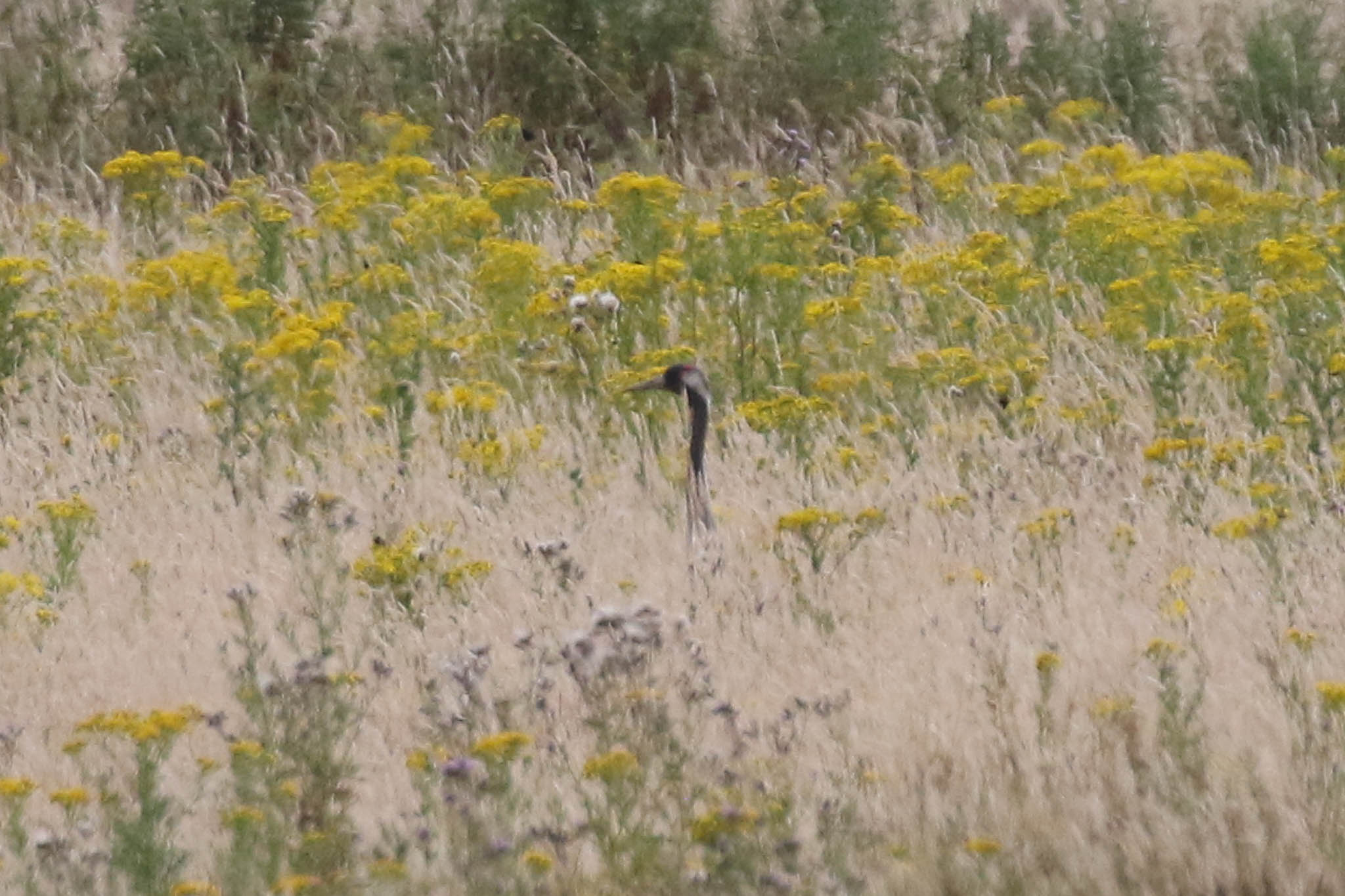
A little further on, we noticed a Hobby hawking low over a set aside field beside the road. We watched as it caught and ate several dragonflies or butterflies.
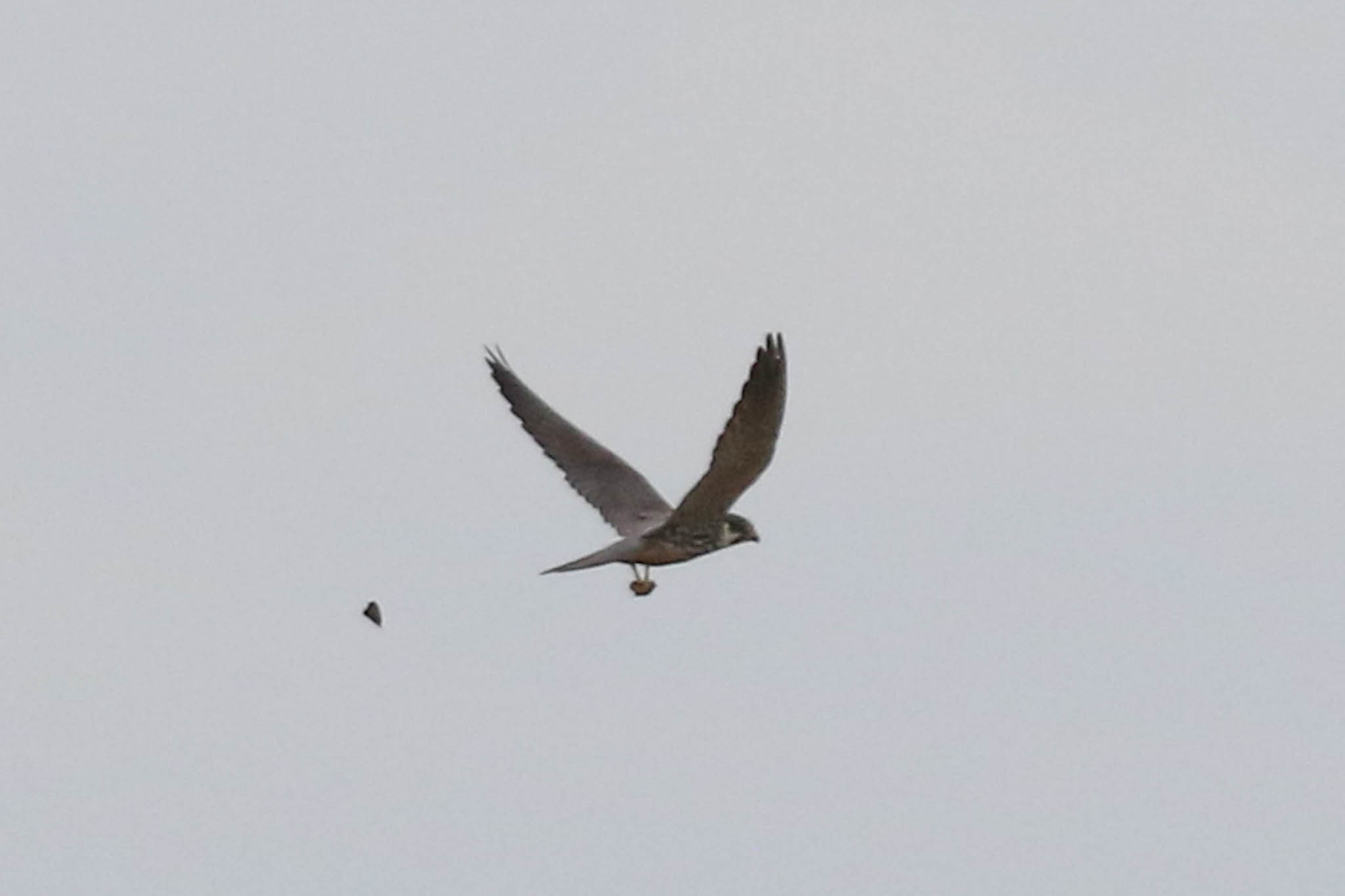
It was great to pick up both Crane and Hobby, as we hadn’t seen either at Lakenheath Fen today – a nice way to round things off. With long journeys ahead for some of the group, it was time to wrap things up now and head back. It had been a really exciting three days, with some really good birds and a nice selection of other summer wildlife.
















